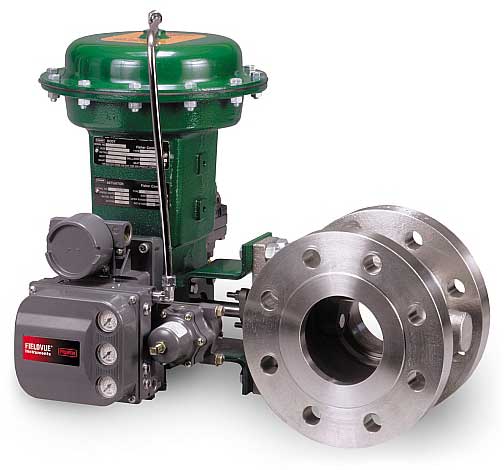The Role of Control Valves in Fluid Circulation Monitoring Systems
The Role of Control Valves in Fluid Circulation Monitoring Systems
Blog Article

Maximize Energy Cost Savings and Convenience With Advanced Structure Automation Controls
In the realm of modern-day architecture and facility monitoring, the integration of sophisticated structure automation controls stands as a critical advancement. By utilizing the power of automation, structures can adjust, respond, and progress in means that were once unbelievable.
Energy Effectiveness Perks
Energy efficiency advantages can significantly reduce power intake and functional expenses in buildings. Energy-efficient systems, such as advanced structure automation controls, can maximize the usage of resources like illumination, heating, and cooling, leading to lower power costs over time.
In addition, improved energy efficiency can lengthen the life-span of structure devices and systems. By operating much more efficiently, cooling and heating systems, lighting components, and various other building components experience much less damage, leading to reduced upkeep and replacement prices. Additionally, energy-efficient structures typically regulate greater building worths and rental prices, providing lasting economic benefits to proprietors.
Additionally, power effectiveness can boost resident convenience and efficiency. Effectively controlled interior environments with optimum lighting and thermal problems develop a more helpful and pleasant office, bring about improved worker satisfaction and performance. On the whole, the energy effectiveness advantages connected with advanced building automation controls are complex, incorporating cost savings, ecological stewardship, and owner well-being.
Improved Convenience Control
Enhancing convenience control in structure environments needs an advanced assimilation of advanced automation systems for ideal owner well-being. By utilizing sophisticated structure automation controls, centers can customize the interior environment to meet the particular demands and choices of occupants. These systems allow specific regulation of temperature level, air flow, and lights, producing a comfortable and efficient atmosphere. Occupant complete satisfaction and efficiency are closely linked to thermal comfort, making it important to have systems in place that can adapt to transforming problems in real-time.
By incorporating these innovative controls, structures can not just boost comfort however likewise improve energy performance by optimizing system procedures based on real occupancy and usage patterns. Inevitably, prioritizing resident convenience through sophisticated automation systems leads to an extra enjoyable and healthier interior setting.
Operational Effectiveness Improvements

Moreover, the implementation of real-time surveillance and analytics tools makes it possible for building operators to recognize power ineffectiveness and functional abnormalities quickly. By continually keeping track of power use patterns and system performance metrics, modifications can be made in real-time to maximize power consumption and guarantee peak functional performance. control valves. Additionally, integrating demand action strategies into building automation controls can additionally boost functional efficiency by dynamically changing energy use based on grid conditions and prices signals
Indoor Environment Optimization
Reliable interior environment optimization is a basic aspect of building automation controls, guaranteeing residents' comfort and wellness while taking full advantage of power financial savings. By making use of advanced sensors and controls, building automation systems can continuously keep track of and change temperature, humidity levels, air quality, and air flow to develop an optimum interior atmosphere. Preserving comfortable and consistent conditions not only enhances occupant complete special info satisfaction however likewise increases efficiency and overall wellness.
Indoor climate optimization additionally plays a crucial duty in power effectiveness. By fine-tuning home heating, cooling, and ventilation systems based upon real-time data and tenancy patterns, developing automation controls can substantially decrease power usage - control valves. Implementing methods such as demand-controlled ventilation and thermal zoning can aid reduce power waste while making sure that each area of the building obtains the necessary conditioning.

Sustainable Environment Creation
Building automation controls not just maximize interior climate conditions for energy efficiency and occupant convenience yet also lay the structure for developing a lasting atmosphere through strategic monitoring of sources and systems. By integrating innovative structure automation innovations, such as sensors, actuators, and smart software application, centers can readjust and keep track of energy use in real-time to lessen waste and decrease their carbon impact. These systems allow predictive upkeep, determining potential concerns before they rise and enhancing equipment efficiency to improve long life and effectiveness.
Moreover, lasting environment production prolongs past energy monitoring to include water conservation, waste decrease, and indoor air high quality improvement. Structure automation controls can regulate water use, discover leakages, and make sure proper garbage disposal methods, adding to overall sustainability efforts. In addition, by managing and monitoring ventilation and purification systems, these innovations boost resident health and wellness and productivity while reducing power consumption connected with cooling and heating operations.
Verdict
To conclude, advanced structure automation regulates offer significant helpful site advantages in regards to power savings, comfort control, functional performance, interior climate optimization, and producing a lasting setting. By implementing these controls, buildings can accomplish ideal efficiency while decreasing power intake and improving top article resident convenience. It is noticeable that the usage of advanced automation innovation is critical in enhancing building performance and producing an extra sustainable future.
Energy effectiveness advantages can significantly decrease energy usage and functional costs in buildings. Overall, the energy efficiency benefits associated with innovative structure automation controls are complex, incorporating price financial savings, ecological stewardship, and owner health.
In addition, including demand reaction strategies right into structure automation controls can even more enhance functional effectiveness by dynamically adjusting power usage based on grid conditions and rates signals.
Building automation controls not just enhance indoor environment problems for energy performance and passenger comfort but additionally lay the structure for producing a sustainable atmosphere through critical administration of resources and systems.In conclusion, progressed building automation regulates offer significant benefits in terms of power cost savings, convenience control, operational performance, indoor environment optimization, and producing a sustainable setting.
Report this page